Four game weeks into the Juliper Pro League season and Charles De Ketelaere – Club Brugge’s 20-year-old attacker – is the standout player in the division. The young forward has been getting a taste of first-team football since he was 18, but now, in the 21/22 season, he has taken an astronomical leap into being a first-choice member of the squad, and one of the best players in the division currently.
In this tactical analysis, we will complete a thorough scout report on the player, which sides of his game he has improved, and where he could still brush up.
Player profile
De Ketelaere started his career with KFC Varsenare, a boy’s football club local to where he grew up in Jabbeke – a municipality located in the Belgian province of West Flanders, not too far away from Bruges. Since 2008, however, he has been with Club Brugge, making his way up their youth teams ever since. For a long time, perhaps owing to his rapid physical development, De Ketelaere has been playing above his age groups.
In 2017, aged 16, he was promoted to their U17 side, and only six months later was he promoted to their U21 squad, still just 16-years-old. He would make his first-team debut at 18-years-old, a 56-minute cameo against Paris Saint-Germain – a game Brugge would lose 5-0. He settled into the first-team initially as a central-midfielder, such was the quality and intensity of his work off the ball that he could competently play in that position at a professional level while still so young.
Standing at 6’4” / 192cm, De Ketelaere is a physical specimen. In the 20/21 season, he would find himself trusted to play in a position further up the pitch on a more regular basis, largely as a centre-forward, but also as a winger on both flanks. By this point, he was still being utilised as a utility player on occasion, slotting in at left-back against Borussia Dortmund, and vying as a defensive-midfielder in a couple of instances. A ‘Swiss army knife’ could never be a more fitting description of the Belgian.
Now, in the 21/22 season, it looks likely that centre-forward will be the position of choice. Brugge manager Phillipe Clement plays him there knowing the well-rounded nature he brings to the team.
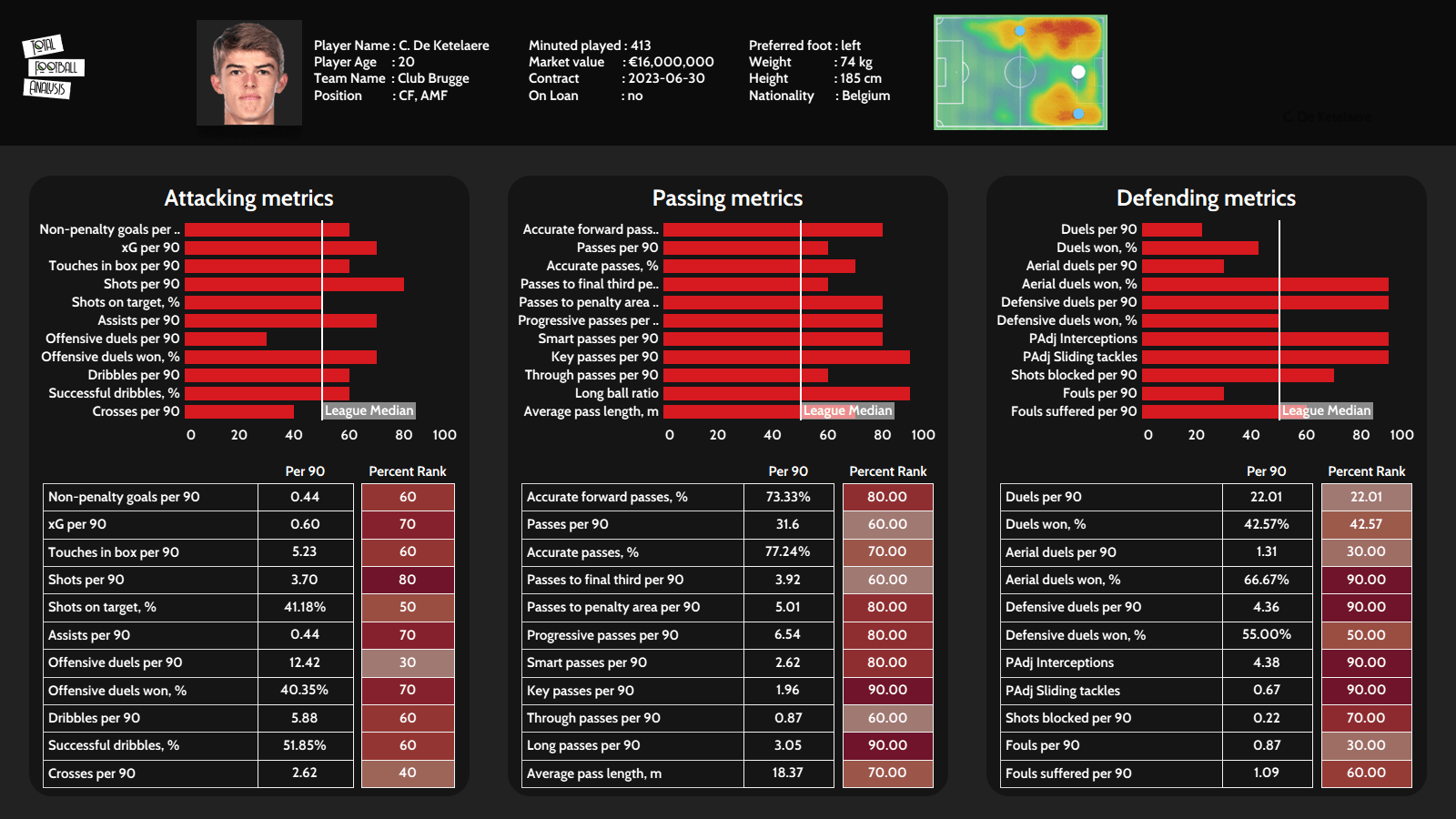
Charles De Ketelaere’s player profile for the 2021/22 Belgian Pro League season. Please bear in mind, if the data looks odd, it’s because of a very limited dataset so early on in the season.
Excellent movement that creates danger
De Ketelaere’s strongest attribute – and what has always been his strongest attribute – is his movement off the ball. His awareness and know-how of where to be is that of a seasoned player, not one who is yet to reach 21-years-old. He is consistently able to find space in between the lines, but this season, as a centre-forward predominantly, he is getting in behind the opposition defence more frequently. Despite not being the quickest player (although not slow), the timing of his runs is often immaculate.
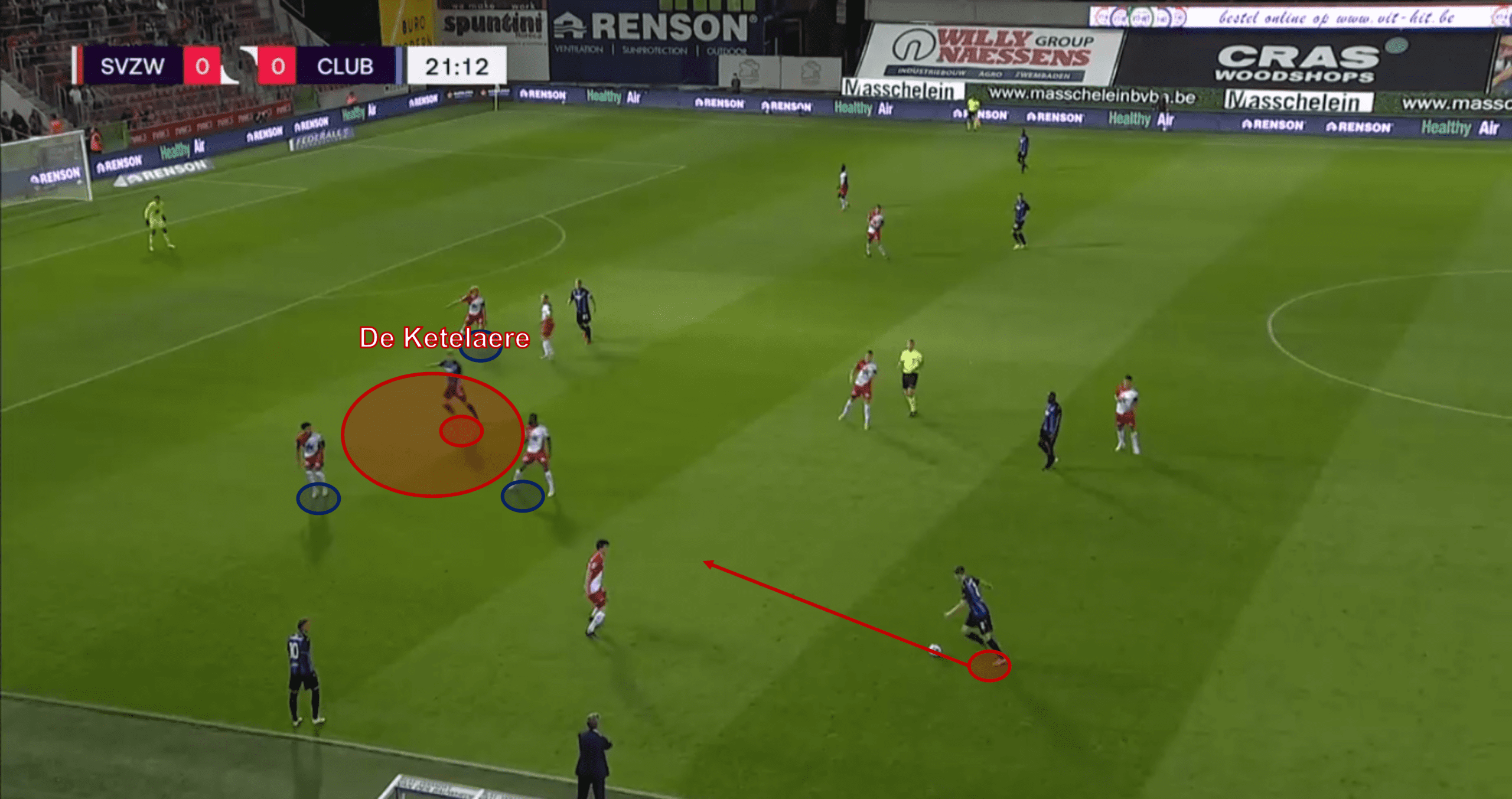
See above how De Ketelaere positions himself smartly between the lines.
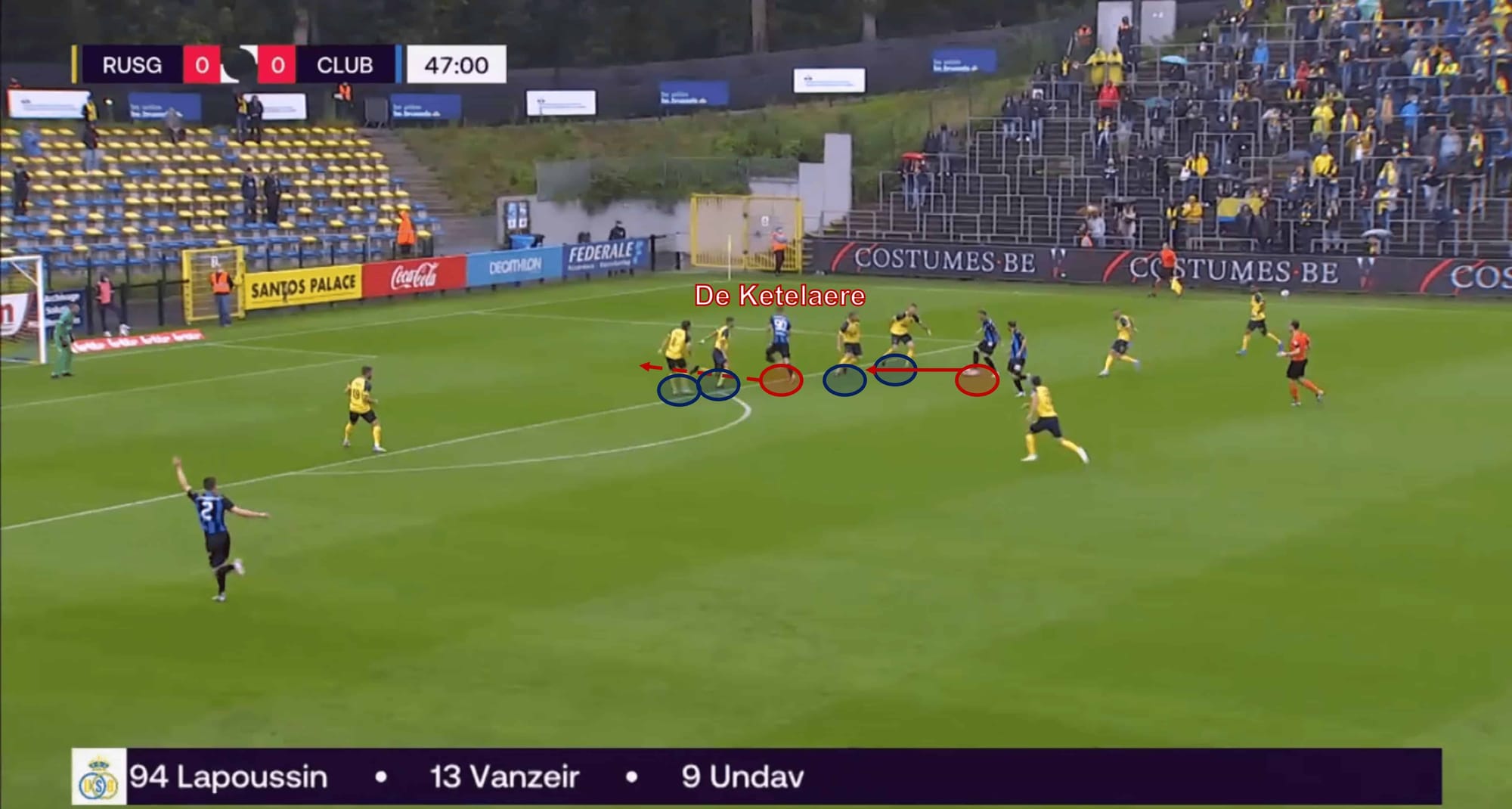
He can also run in behind with good timing as shown above.
While he can position himself between the lines, or running in behind a defence, at 6’4”, he has grown to become a player who can hold up the ball capably and bring teammates into the fold. When he broke into the first-team, he was sitting at more towards 6’1”, so this is a skill has developed (and is still developing) over time. He now possesses good hold up play, and he can utilise his frame smartly, which is impressive. It typically takes young forwards at least a couple of years to understand their body and how to best utilise it in the final third.
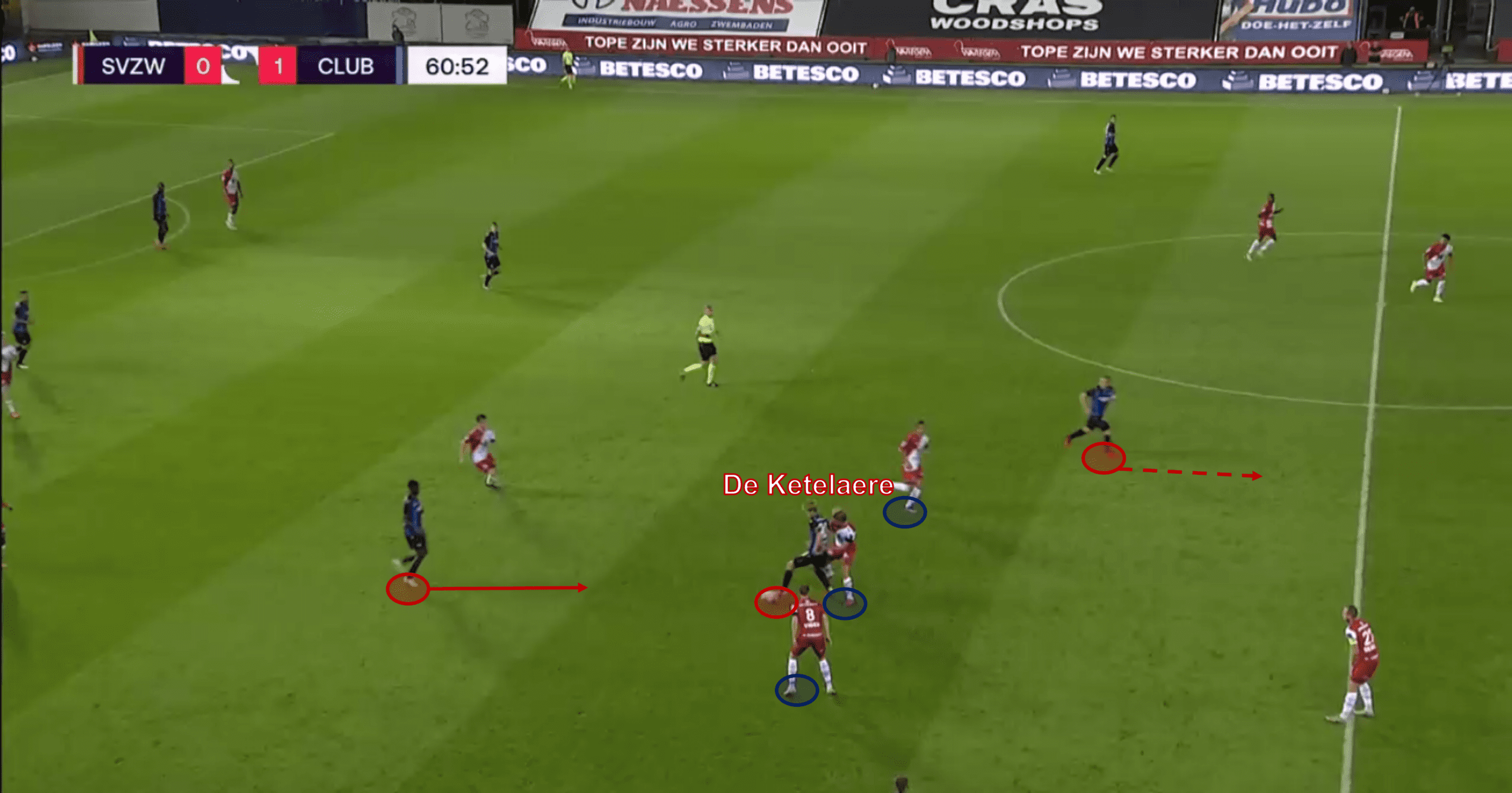
De Ketelaere holds up the ball well here – utilising his body wisely to keep possession.
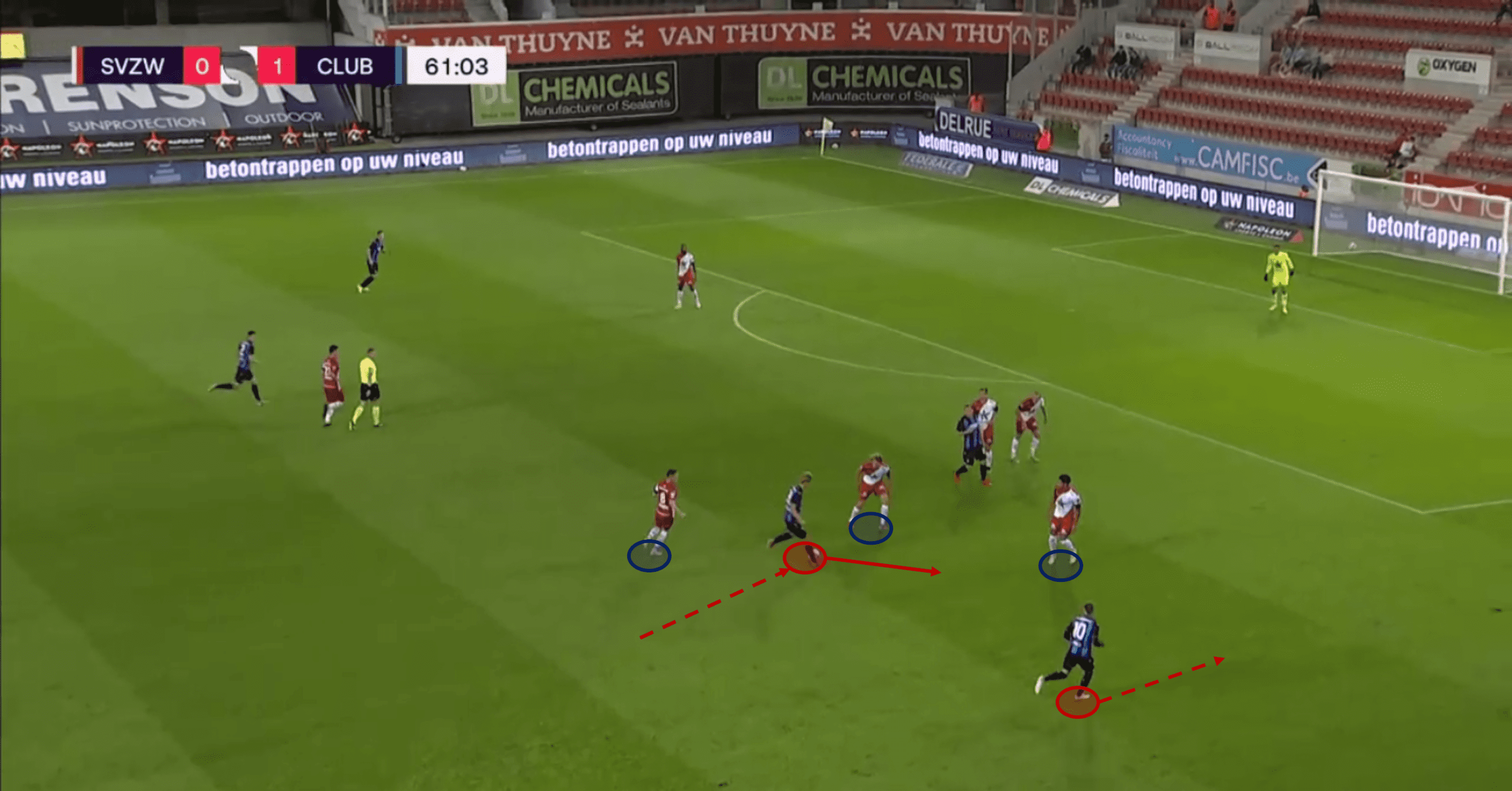
He collects the ball later on in the attack, where he carries it up the pitch and releases out wide to his teammate, Lang.
It is this intangible and unquantifiable that makes De Ketelaere stand out in the Belgian topflight. It is a shame then there is no real data we can use to prove that point. Only from watching the young Belgian can you understand how vital he is to Brugge’s fluid attacking unit. Last year, they were the division’s top scorers with 73 goals, and if this season’s displays thus far are anything to go by, don’t be shocked if the same happens again come the end of this campaign.
His well-rounded skill set, to run in behind, hold up the ball, or position himself between the lines, meshes well with a smart footballing brain. He has the ability to pull off all types of movement, but he also has the know-how of when to utilise which type. For example, in wide areas, he combines well with Brugge’s wingers because he acts as a link man. He lacks an ego which means he does a lot of the thankless tasks in the final third that ego-fuelled dribblers might not.
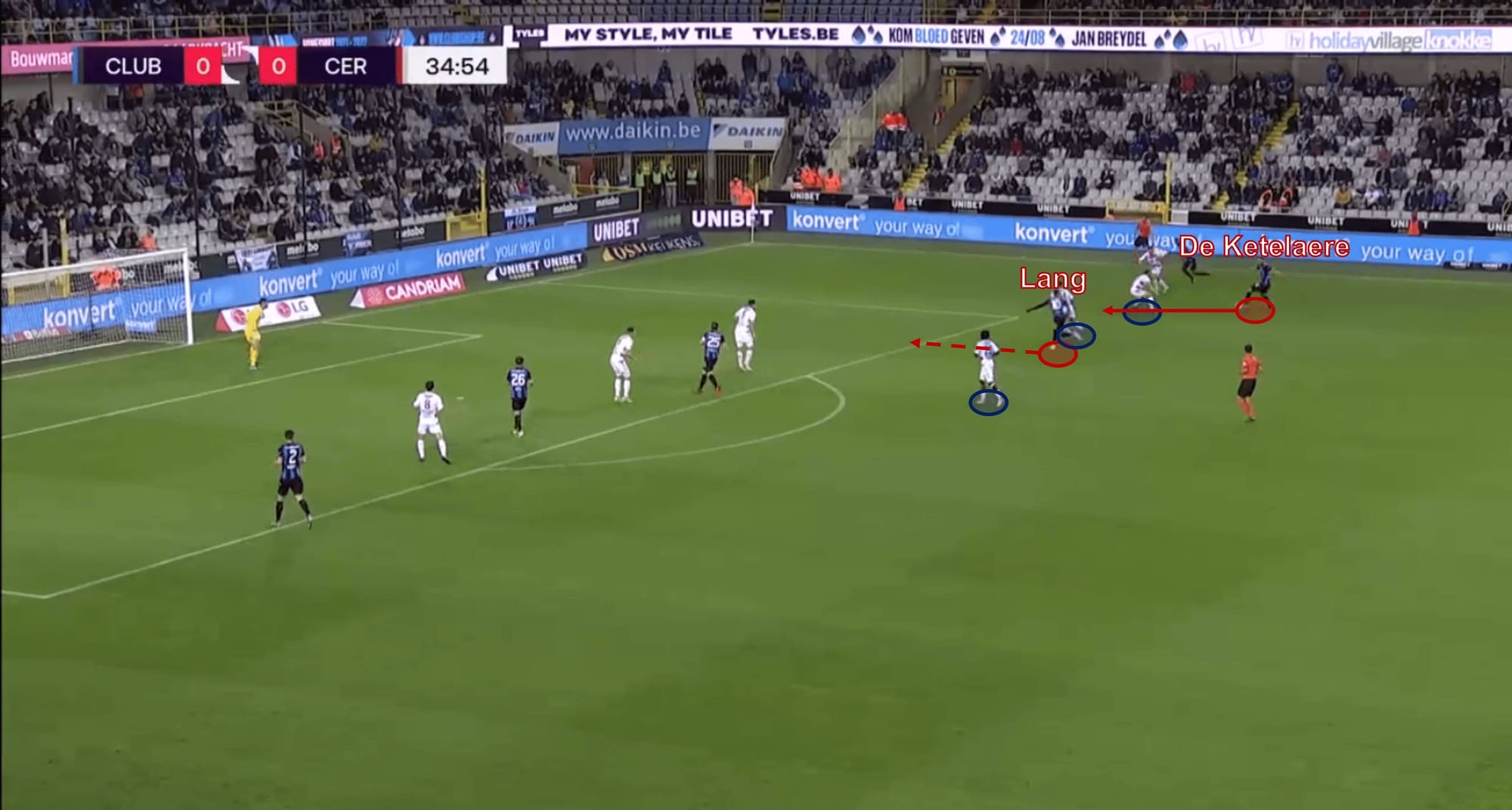
He collects the ball out wide, and spots Lang’s run in behind, which he obliges with a through pass.
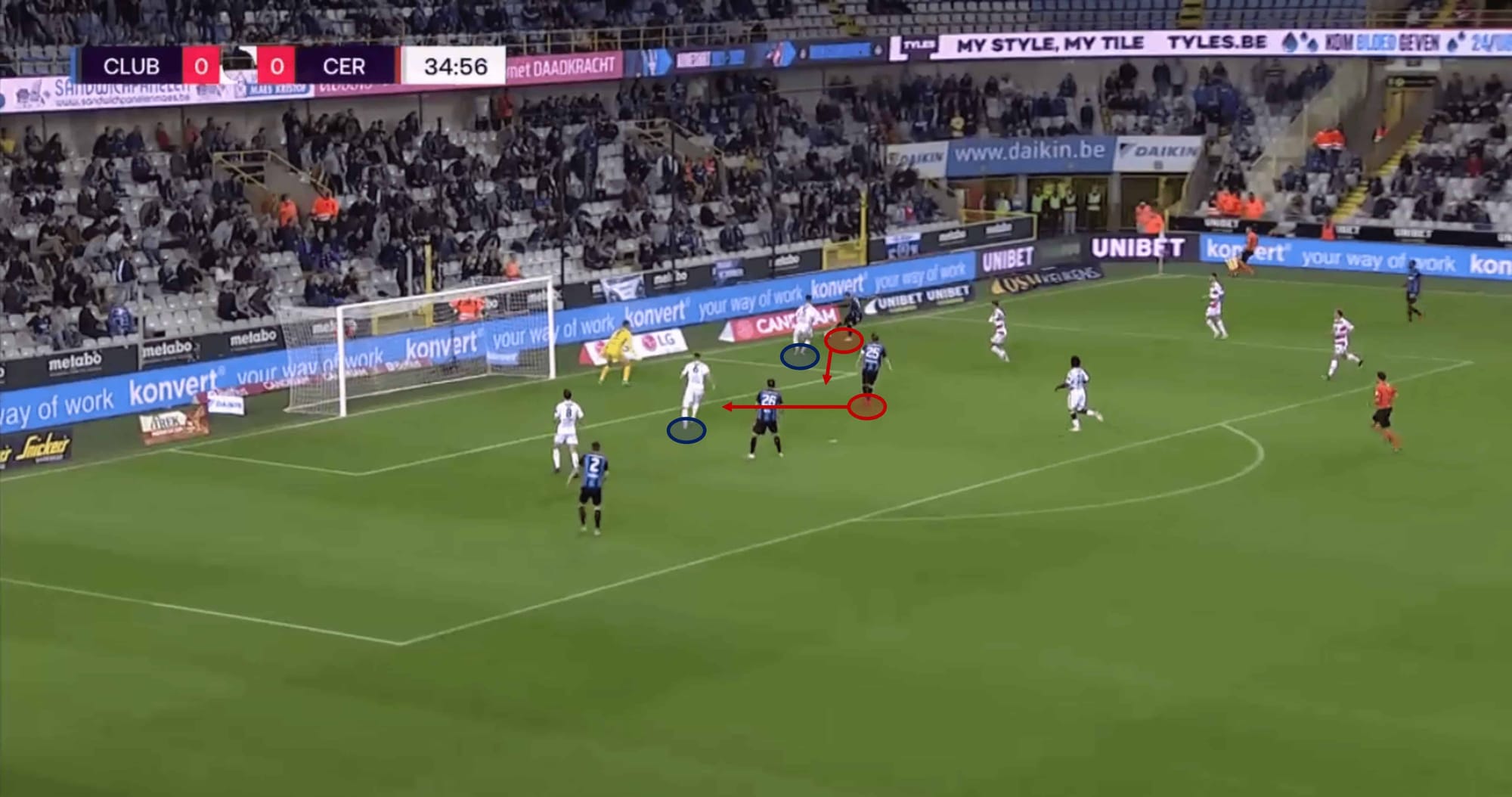
Lang pulls back for a teammate who calmly slots home.
Although his last two matches have been as a centre-forward, De Ketelaere has also played this season as a left-winger and attacking-midfielder. In these games, he is of course deployed a little deeper on the pitch, but in both positions, he is still largely creating overloads down the half-space and adding to the fluidity of the attack. In each position, he combines nicely with Noa Lang on the flank, and they seem to have a good understanding with one another.
Elegant ability on the ball
One area that De Ketelaere has improved upon in the dawn of the 21/22 season is his ability on the ball. He’s getting into the space to shoot more often, due to his aforementioned movement, he is becoming more ambitious and cleverer with his passing, and his dribbling is becoming more frequent, and not only when he plays as an attacking midfielder/winger. His dribbling in central areas has improved too.
His xG and xA numbers are pretty high right now (0.6 xG per 90 & 0.35 xA per 90) but do expect these to settle over time. 360 minutes played in this campaign so far, so he will ultimately fall back to a lower level of output. Still, 4.3 shots per 90 is a tremendous improvement on 1.7 last season, and 3.3 key passes compared to 2 is another significant upgrade. Interestingly his dribble attempts volume has only increased by 0.3 per 90, yet he is completing 0.6 more per 90. However, again, limited minutes means these figures are overall an unreliable depiction of a player.
How is he getting into space to shoot so often? Well, his movement, as we mentioned before, but it is also moments where he doesn’t move at all inside the area that generates him opportunities. He will often get into the area and place himself in the prime space for a cutback. He just seems to possess a good understanding of where to be and when inside the penalty area. It’s as if he learns these intangible traits quicker than your average young forward.
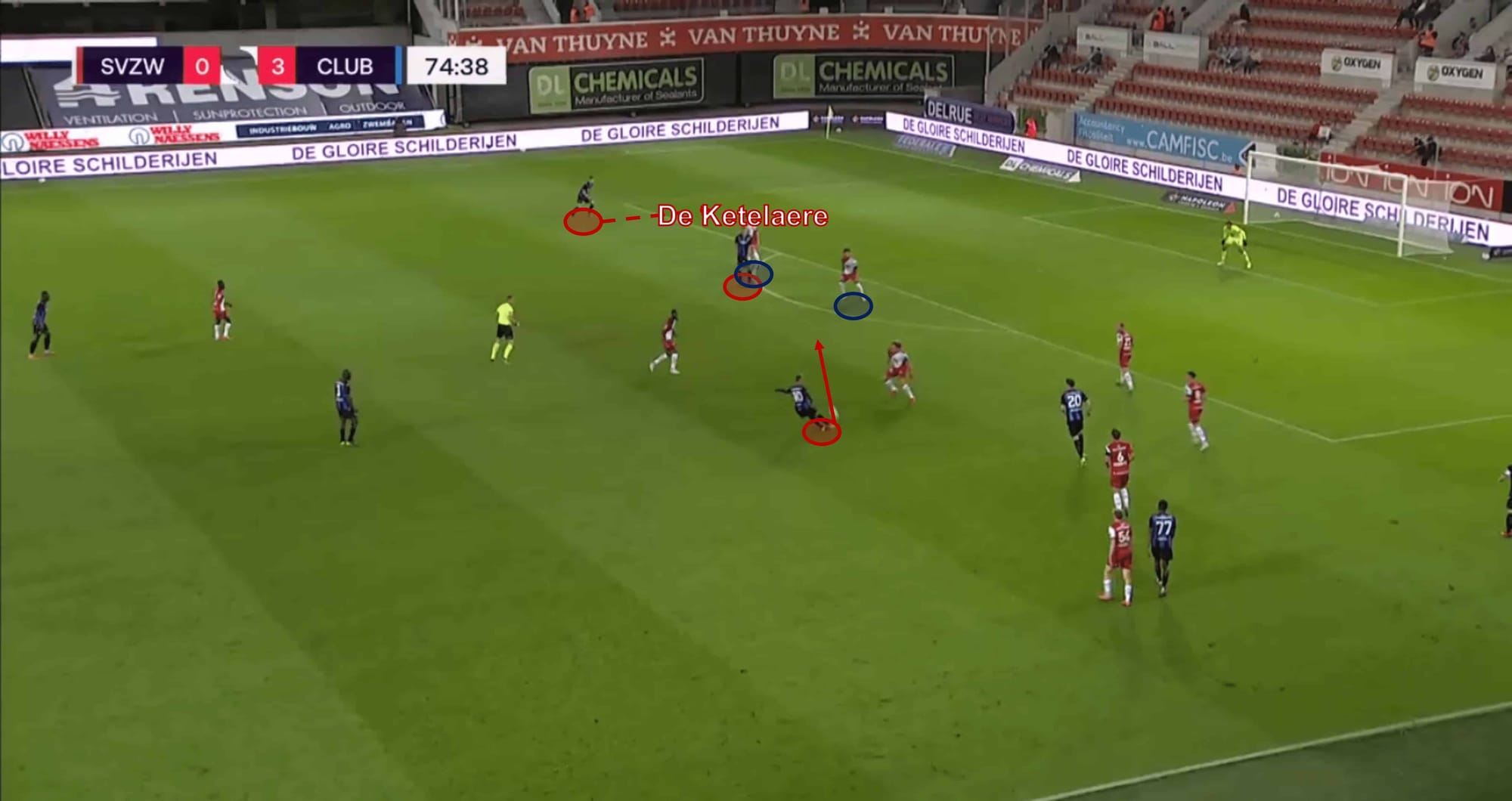
De Ketelaere is standing still as the ball is sent over to the left-wing.
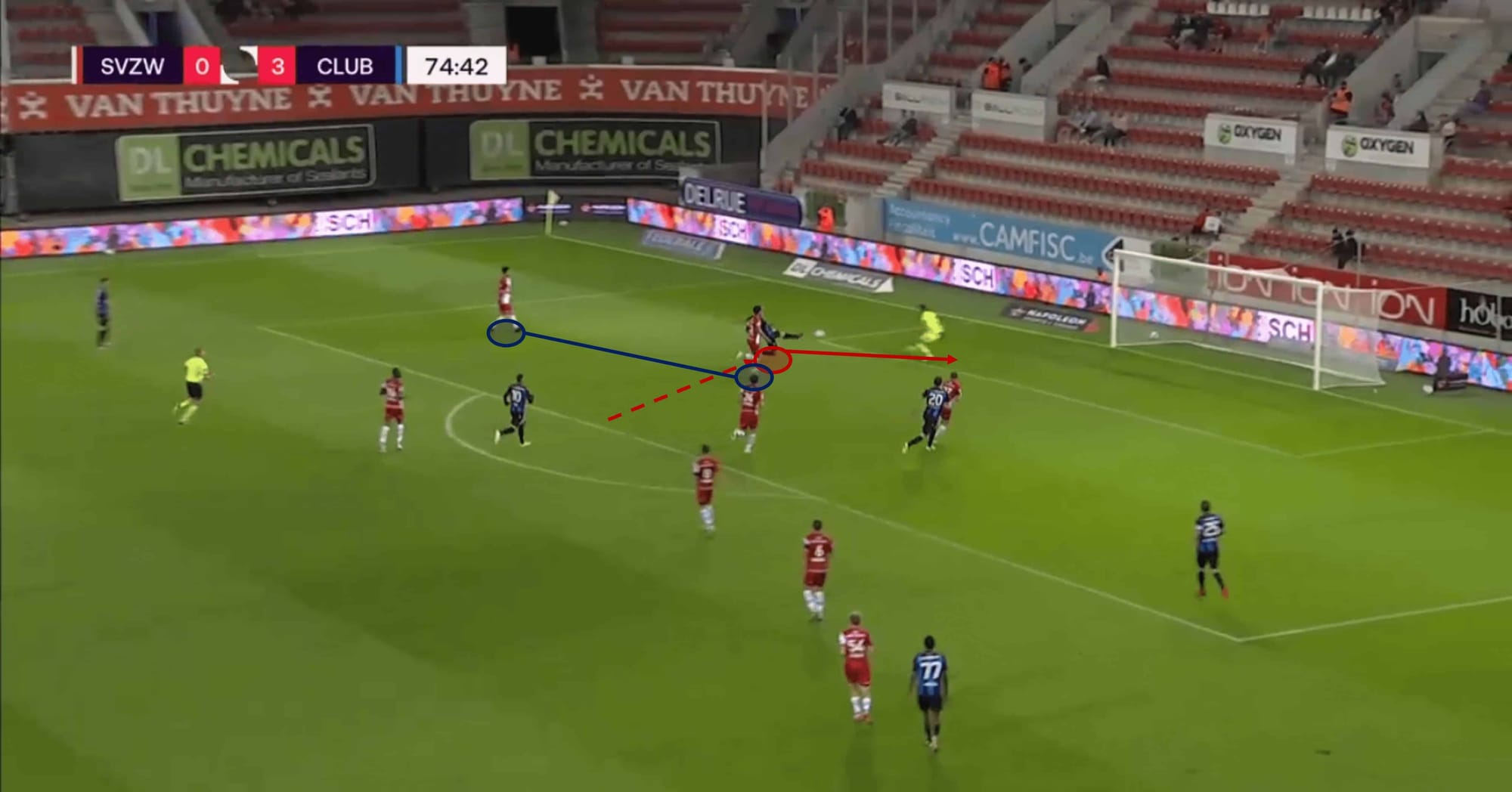
Once the ball is with the left-winger, he makes the movement in behind to score from the through ball.
Though, as a young forward still developing, De Ketelaere is not perfect. Of course, he isn’t. His finishing, at times, leaves much to be desired. From zones on the pitch that you expect the young Belgian to ripple the net, he can either miss the target entirely or just lack the composure to beat the keeper. It’s a consistency in front of goal that he is lacking, and a reason why he could do with a full season in the Belgian Pro League, rather than opting for a January move. Food for thought, at the very least.
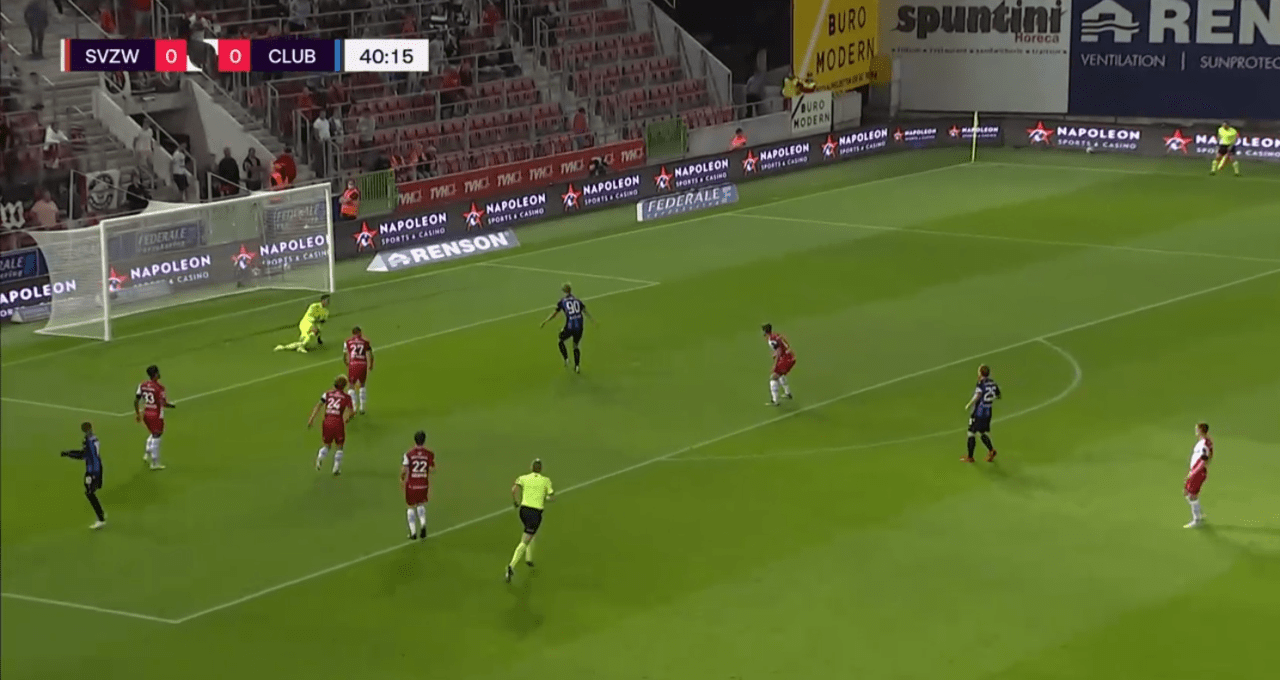
From this point, De Ketelaere does not score, takes too much time on the ball, and stumbles.
In terms of creating chances, in past seasons it has been his core strength, but this season he is shooting more than he is laying off chances. Even in his games as an attacking midfielder and a winger, he was shooting more than he was producing key passes. Still, he is an overtly creative presence, and it is the one side to his game that we could see translating nicely to a tougher league. He has fantastic vision, he can spot runs and teammates in space, and he has the ability to find them with a smart pass.
He also plays plenty of second or third assists in this Brugge team. When he drops deeper, he carries the ball well into dangerous areas, allowing the time for teammates to make runs in behind or into space. Inside or around the penalty area, De Ketelaere is still very sharp. He shows good awareness of where his teammates are, and how to get the ball to them, and far away from his opponent. Timing is key in these moments – when to release the pass.
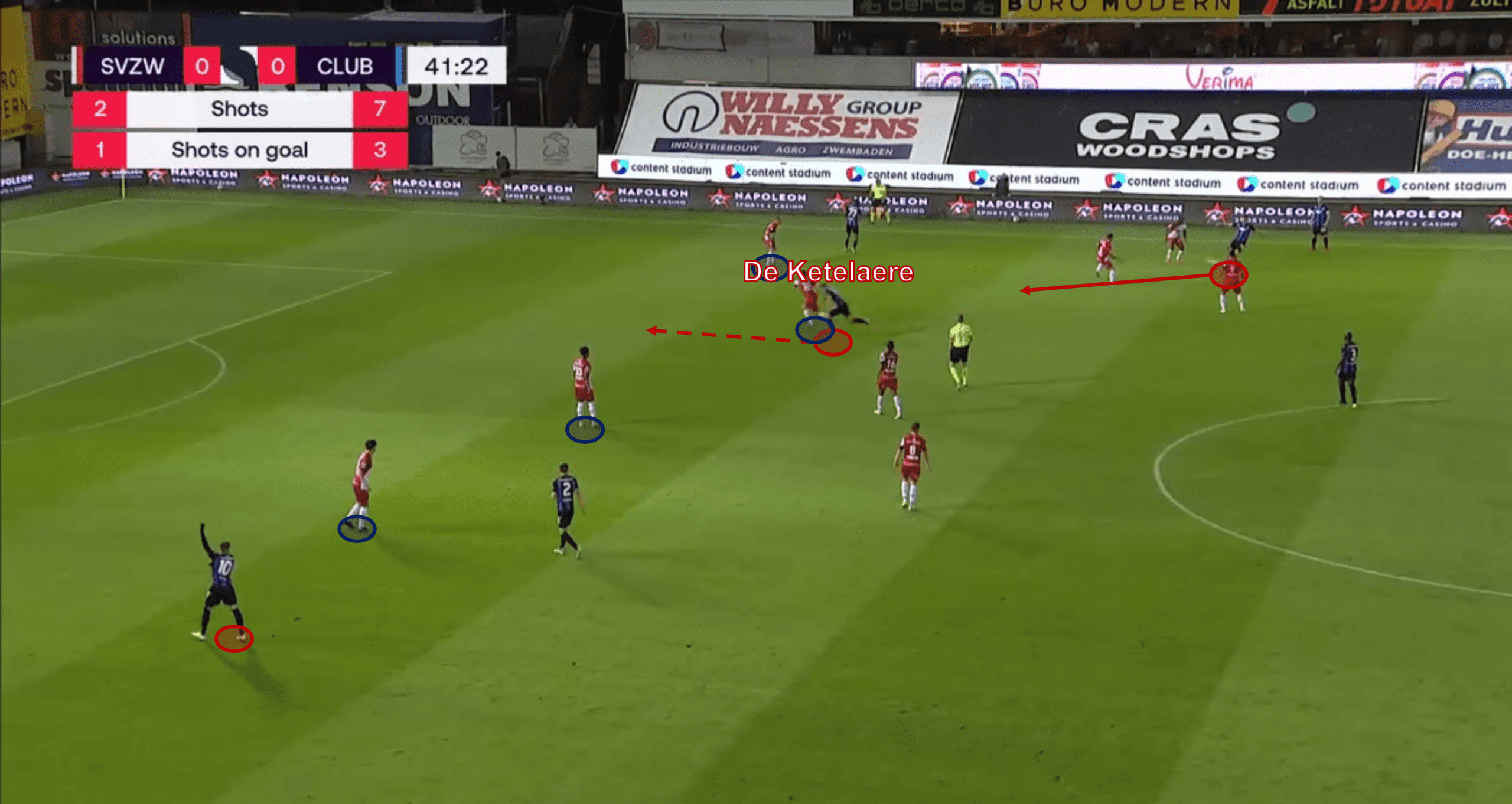
De Ketelaere moves in behind when the ball carrier is a bit further down the pitch, expecting the attempted through pass.
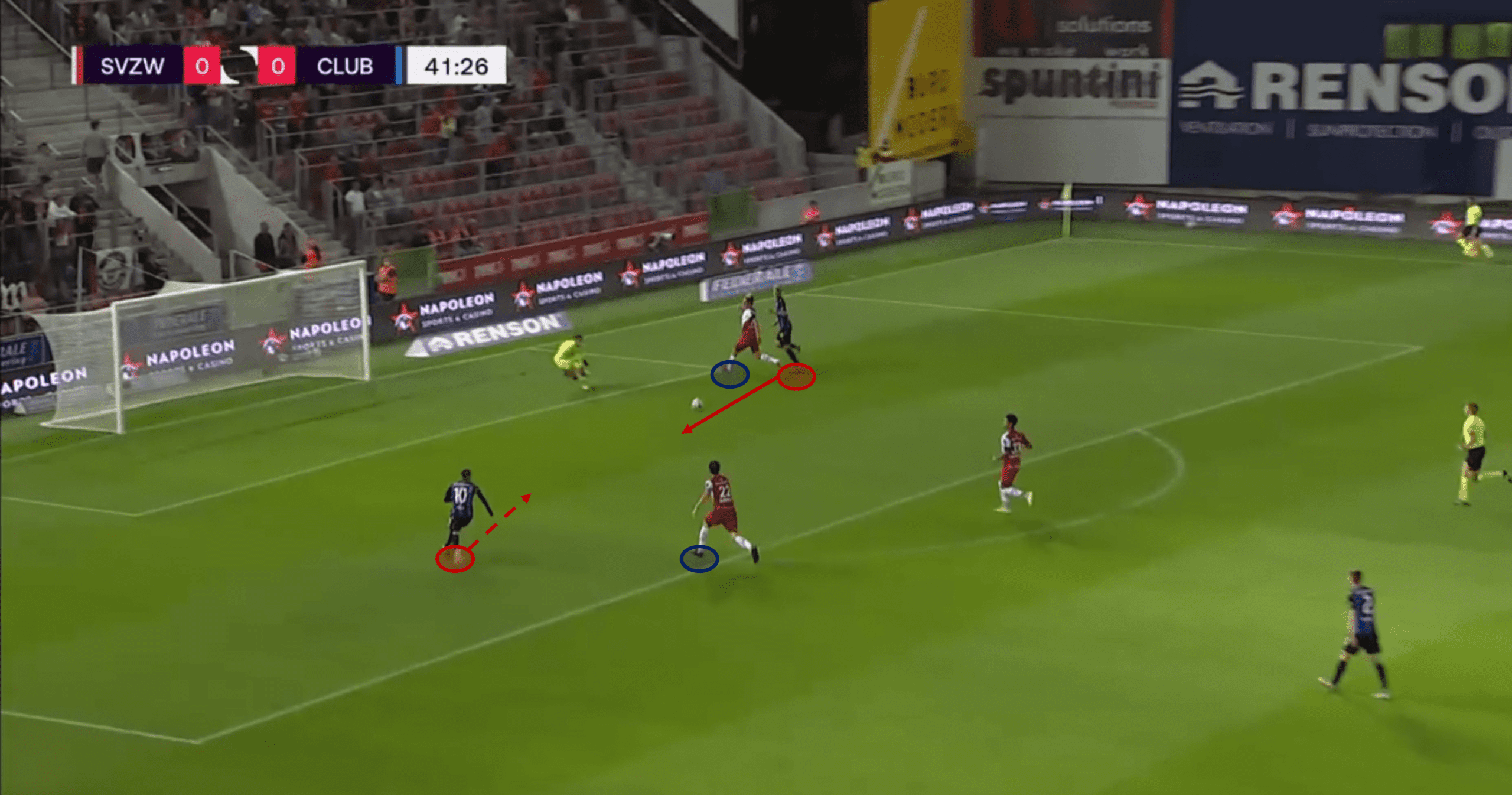
He lays off the ball to Lang inside the are who takes the ball around the two defenders to score.
His dribbling has also seen an improvement in the early stages of this season. For such a tall player, he is very elegant on the ball. He possesses a good turn of pace and quick feet which allows him to both evade pressure and create separation from himself and his opponent. In central areas, this is much more difficult to pull off, yet the most dribbles he has pulled off in a game so far this season (four), against Zulte Waregem, he played as a centre-forward.
His dribbling has been utilised in a variety of scenarios already in the four games he has played. It has been used to evade opponent pressure in the defensive third of the pitch, enabling ball progression for his team, and it has also preceded shot-creating actions. He certainly isn’t the perfect dribbler, his gait and length means that he is limited against excellent 1v1 defenders, but it is still an effective tool at his disposal. One of many.
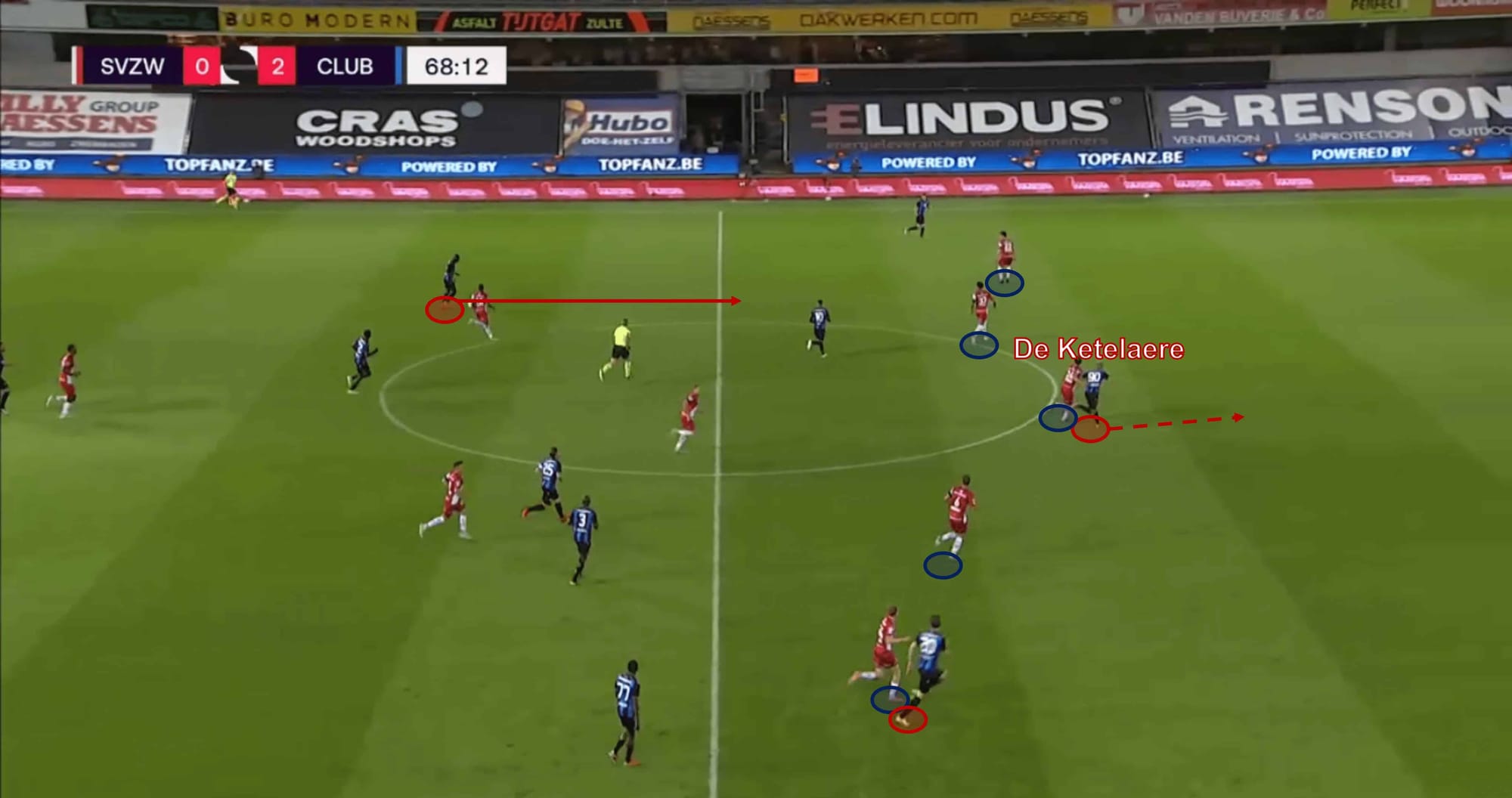
De Ketelaere runs in behind here against a high line.
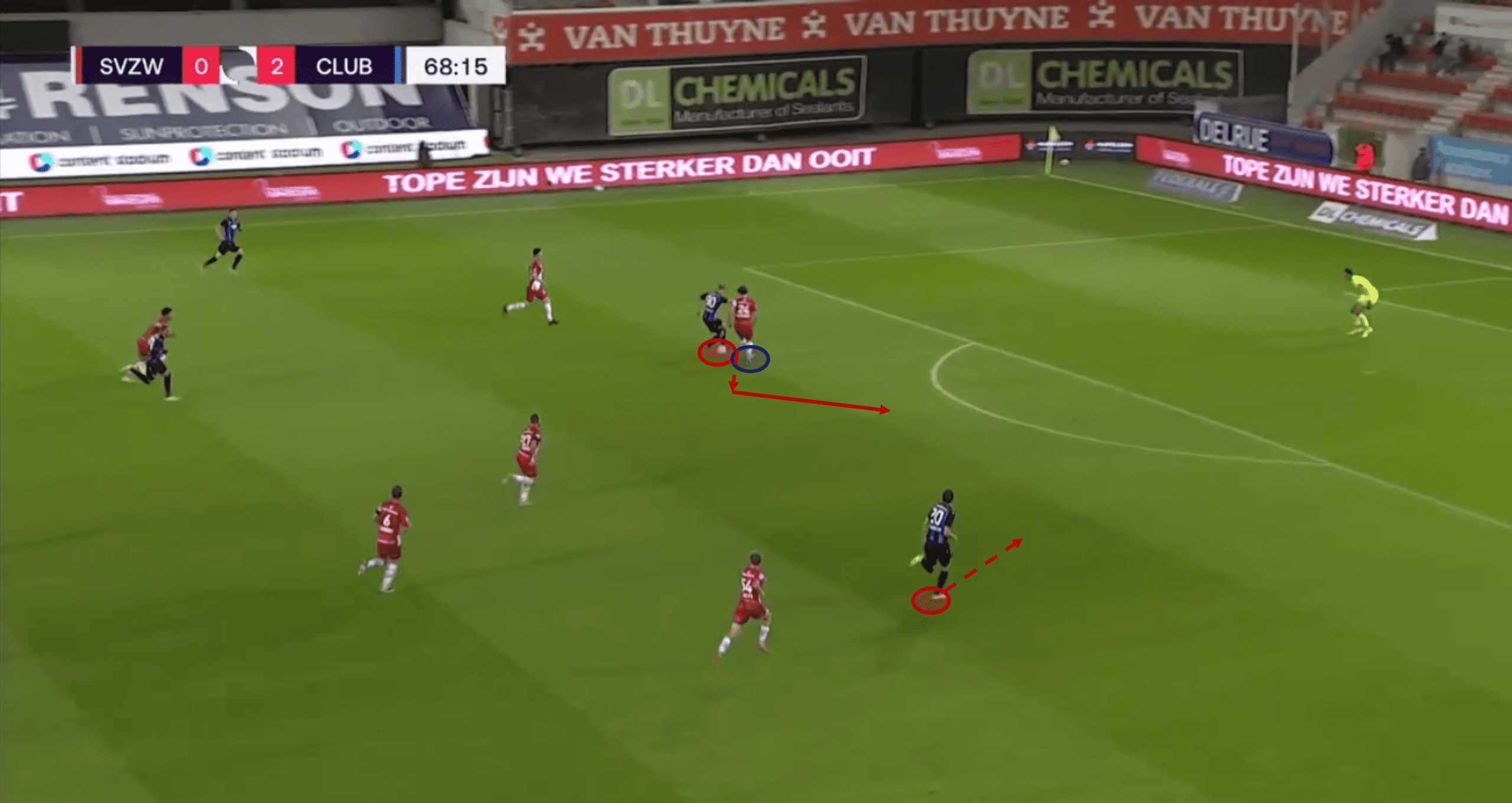
He dribbles with the ball for a little while, before showing good offensive awareness by chopping right and laying the ball of to a teammate who scores.
Diligent work off the ball
Above all, De Ketelaere is an extremely hard worker. His work ethic is second to none, and as a result, deserves all the praises he will undoubtedly receive. You can put young CDK in any position on the pitch – he will give his all and likely thrive there. A game that sticks out happened during last season against Royal Excel Mouscron, where De Ketelaere started as a left-back, he won the most duels of any player on the pitch (13), made the most recoveries (10), and won man of the match in a 0-0 draw.
Even as a forward, he is capable of pressing high and winning the ball back in advantageous scenarios. When he broke into the side as a central midfielder and striker, he shone in datasets when it came to winning the ball back for his team – but the rest of his game still needed developing at that point. What can be concretely said is that while his goal and assist output has increased, he hasn’t neglected his defensive duties as a result.
He has a good understanding of pressing principles. He kicks his pressing up a notch when the ball is played into wide areas, or when the opponent takes a heavy touch. He is also aware of his positioning on the pitch, and when he can allow his teammates to press, and when he can step into passing lanes to intercept the ball too. It is good that he has learnt this at an early stage in his career, in an era of football that relies on forwards so heavily to lead the line when it comes to pressing.
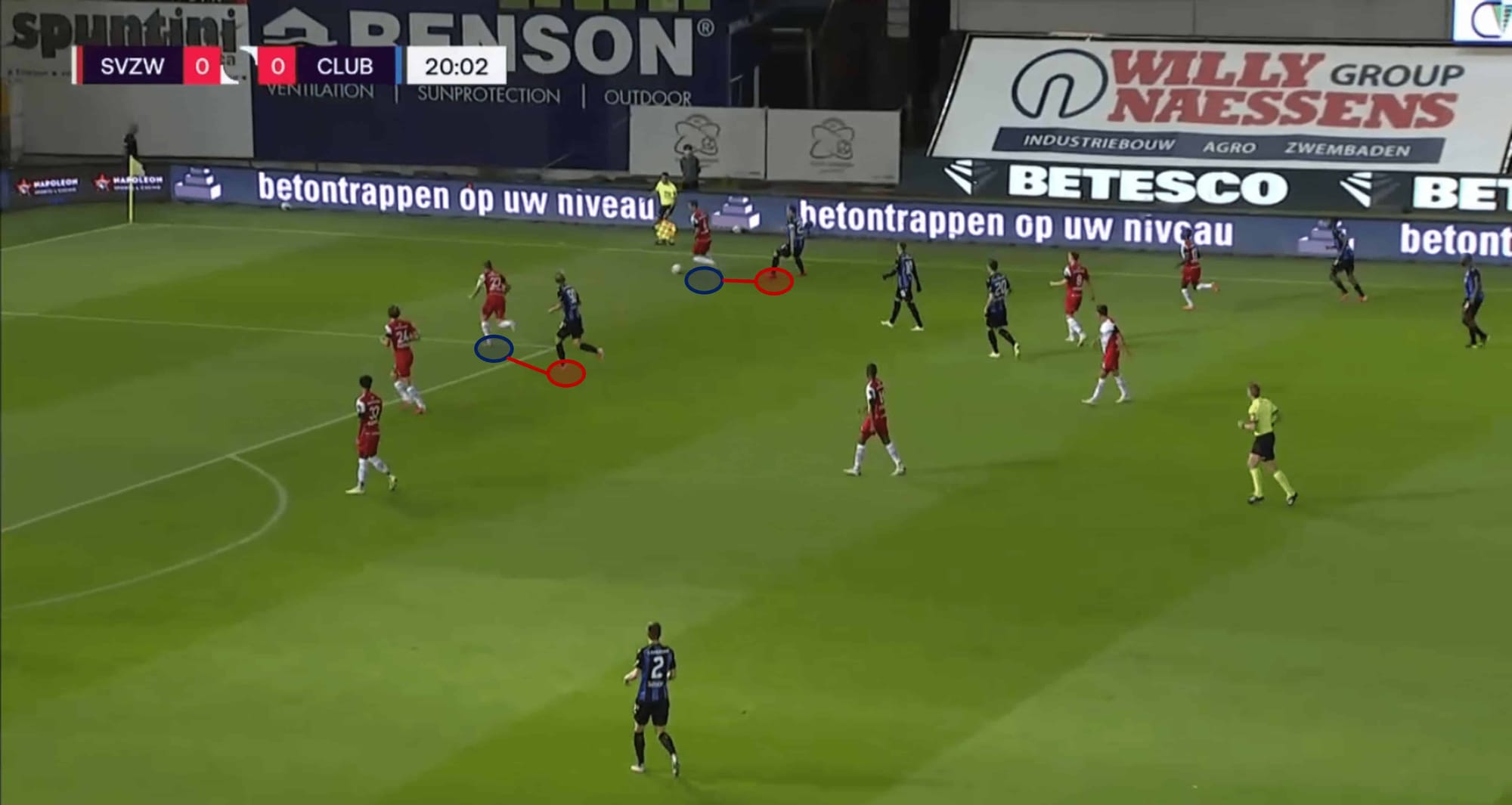
De Ketelaere here keeps tabs on his opponent, demonstrating a good understanding of team pressing principles.
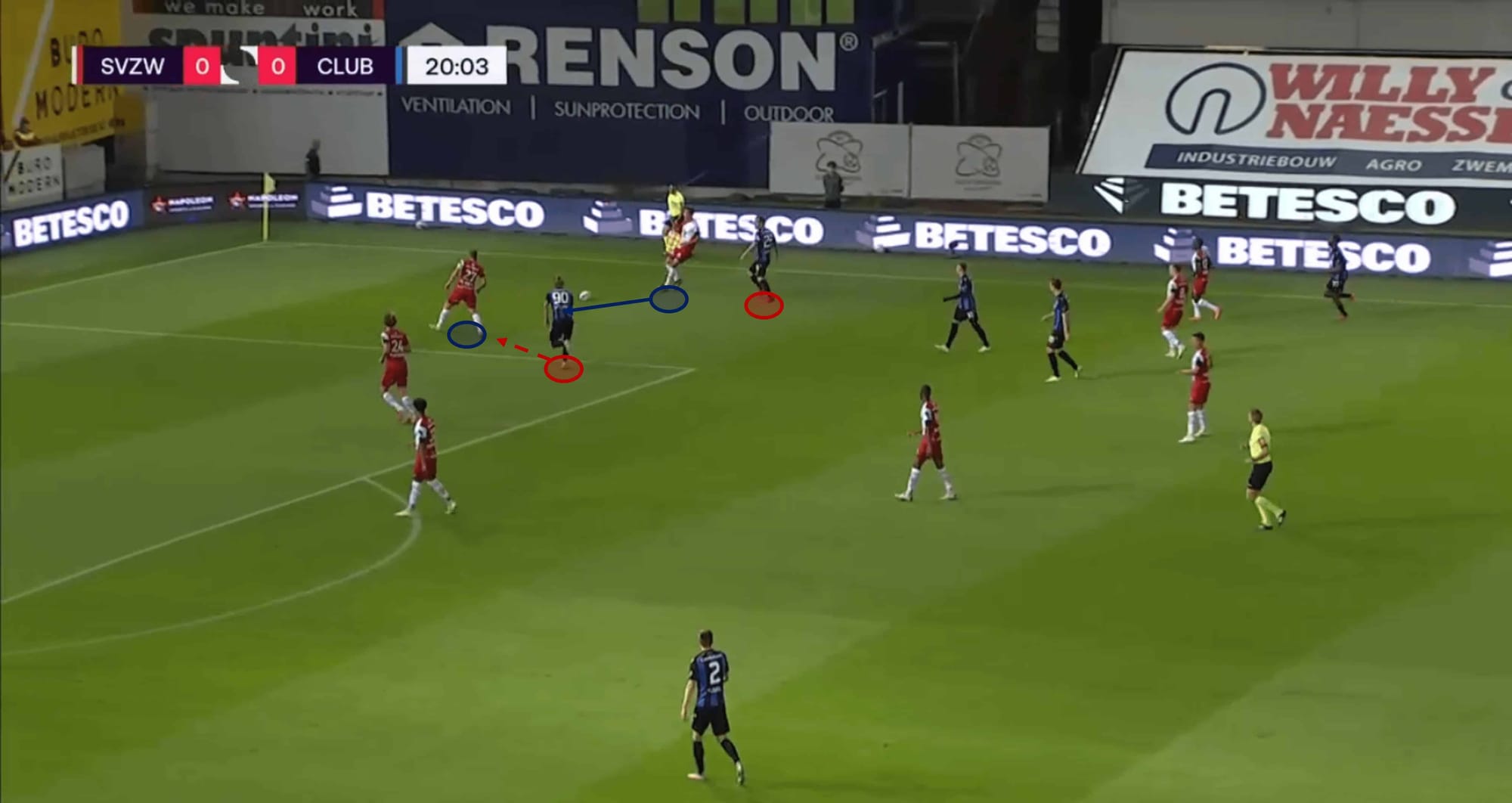
The pass is played inside to his pressing target and off he goes to intercept the ball.
In the example above, De Ketelaere sees that his teammate is nearby the ball carrier, so he keeps his distance to allow his opponent to pass inside. Once he does, the young Belgian is off, on the run and ready to retrieve possession for his side. He’s quite smart with his pacing, as we will see below, he can start off his pressing at quite a laboured pace, in a sense to fool the opponent, before turning on the afterburners to launch a surprise tackle on his opponent.
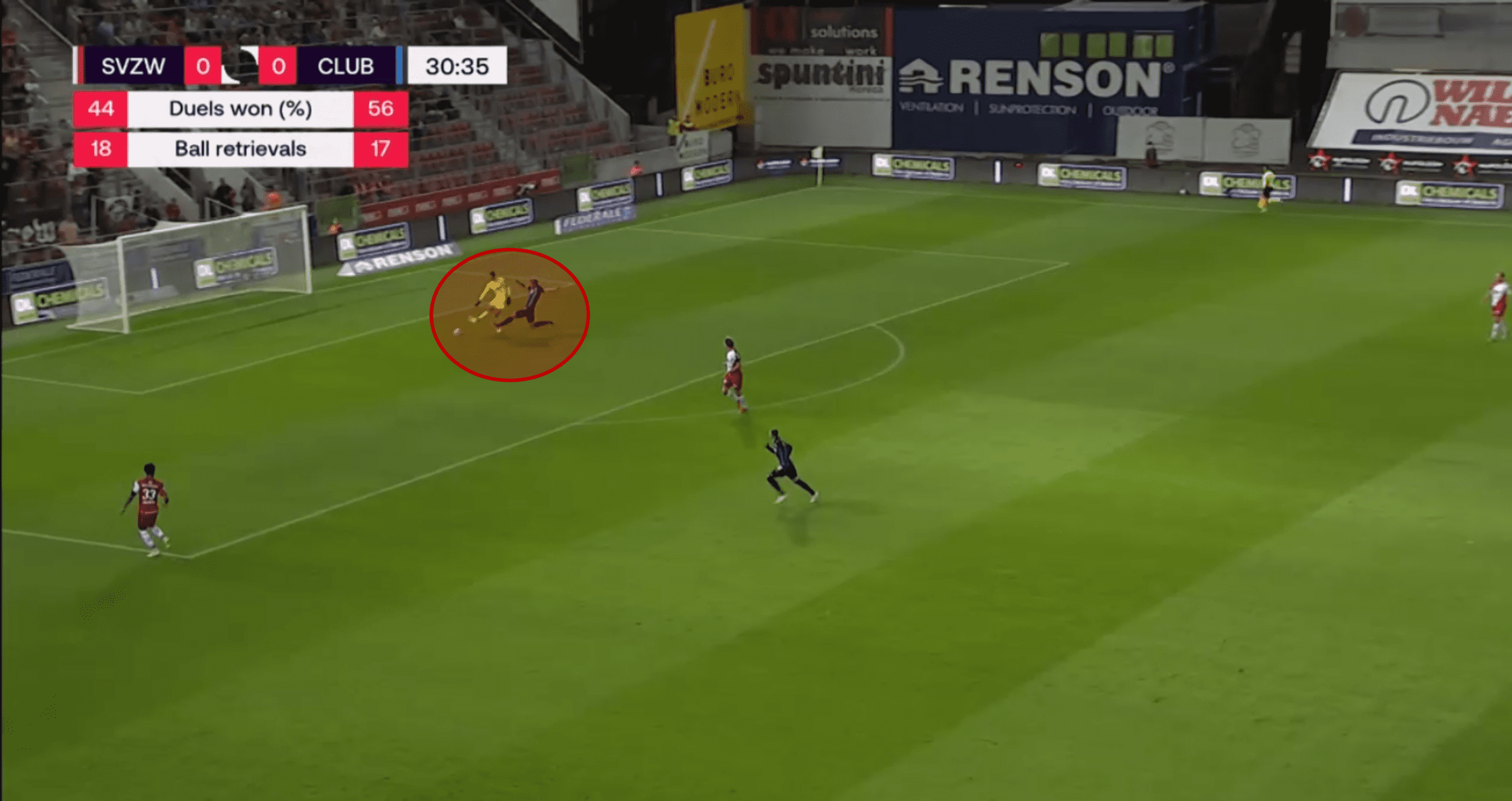
Above is an example indicative of the pressing levels that De Ketelaere is willing to go to.
It is also worth noting that De Ketelaere also enables Brugge the ability to go direct, thanks to his aerial presence. His height, alongside his understanding of how to manipulate his body, means that Brugge’s defenders can go direct to De Ketelaere’s head or chest, and his first touch is generally consistent which means he can collect the ball and create overloads down the half-space. It’s a useful asset to have, but in the Premier League, his slight frame might lead to him being bullied around a bit more.
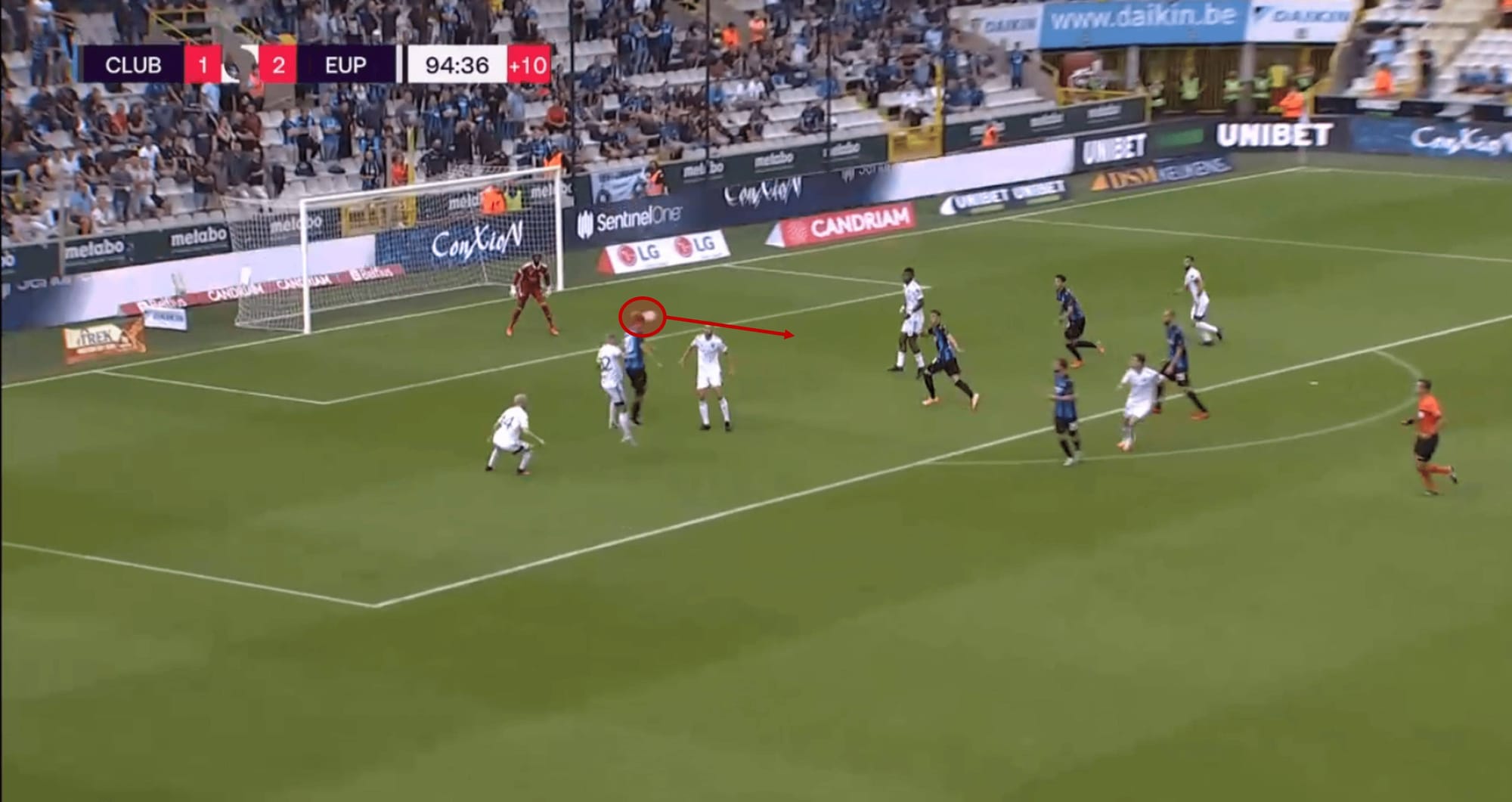
He receives the direct ball and heads onto a teammate inside the area.
Forecast for the future
This mesh of talents makes for an incredibly unique prospect. You often get one or the other when it comes to hold up play, aerial ability, and defensive work rate, versus an ability to go past a player, have promising creative fundamentals, on top of some fantastic and smart movement. To have all these assets in one player is something you don’t see often in world football. This makes De Ketelaere’s potential ceiling very high – likely a top-level player in one of Europe’s top five leagues.
What he needs to work on in the immediacy is his consistency in front of goal. While it is okay to underperform in the Belgian league, somewhat out of the limelight (although still playing for a big club), in a league such as the EPL, De Ketelaere would be ridiculed for such misses. We only have to look at players such as Timo Werner of Chelsea to see what that can do to someone’s mental state. If he can iron out those issues, and perhaps bulk out his frame a bit, we have a magnificent talent to watch.

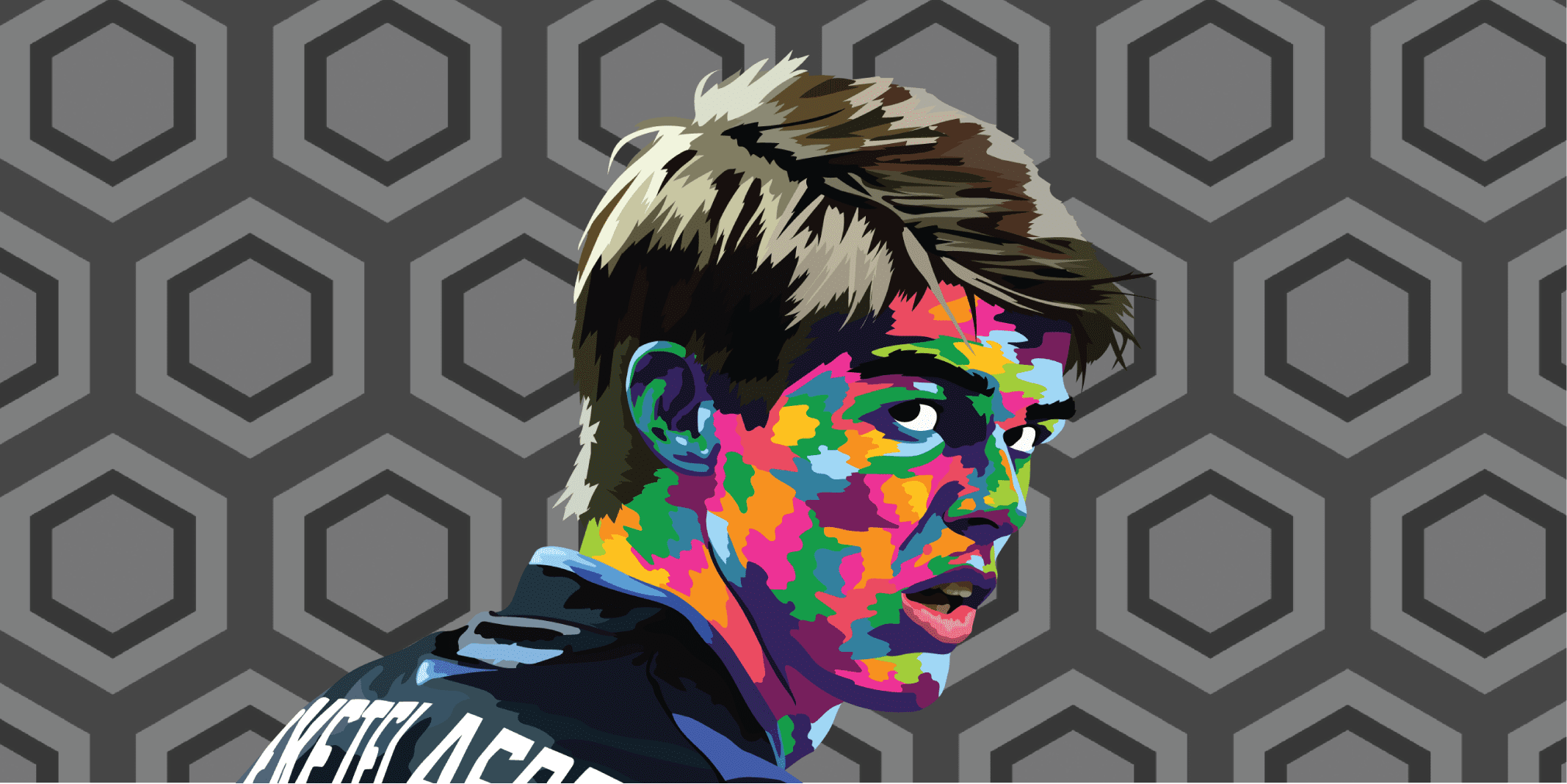

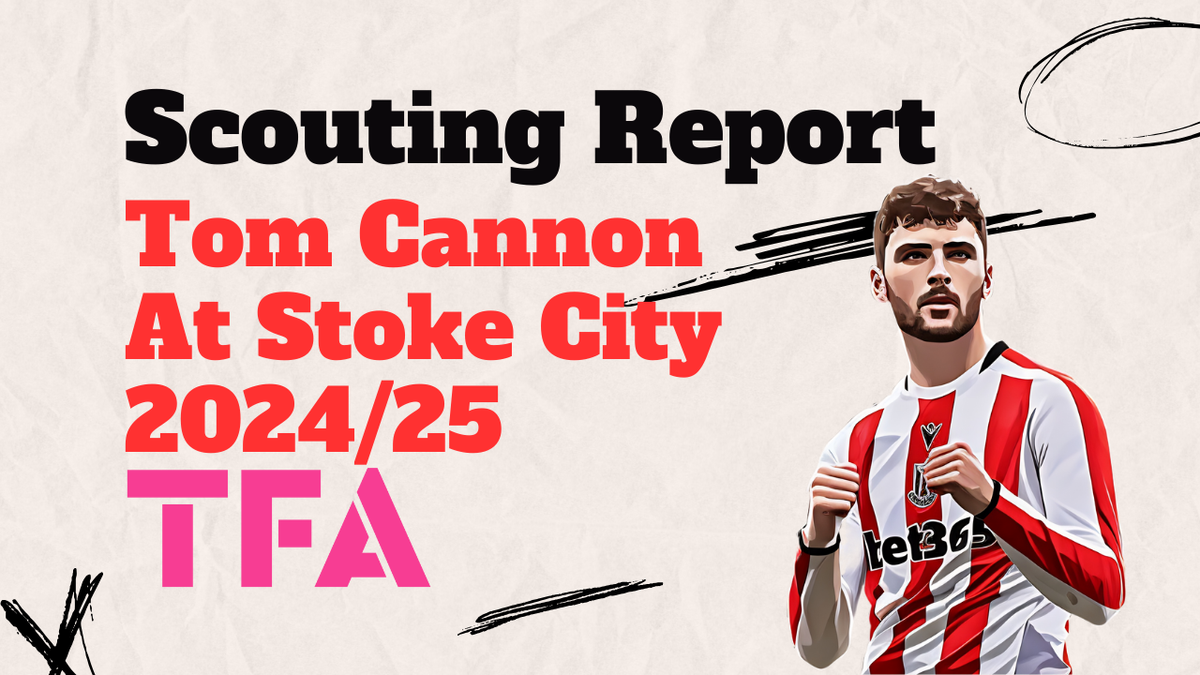
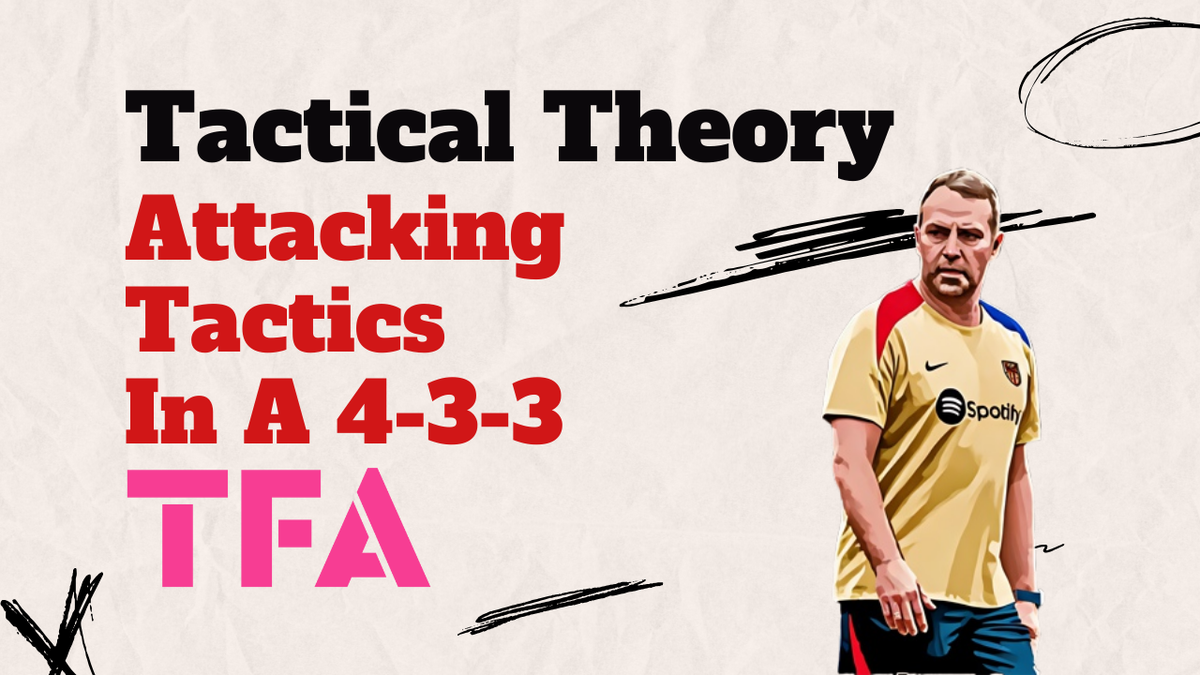
Comments